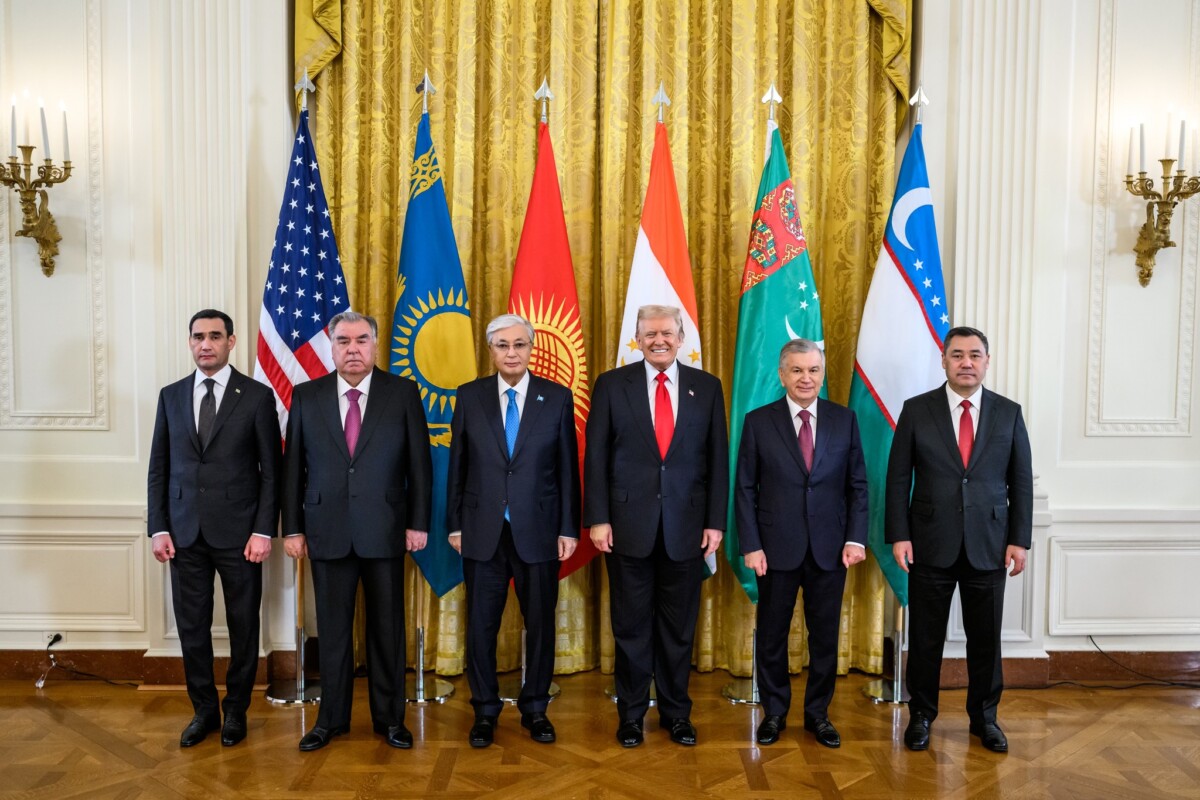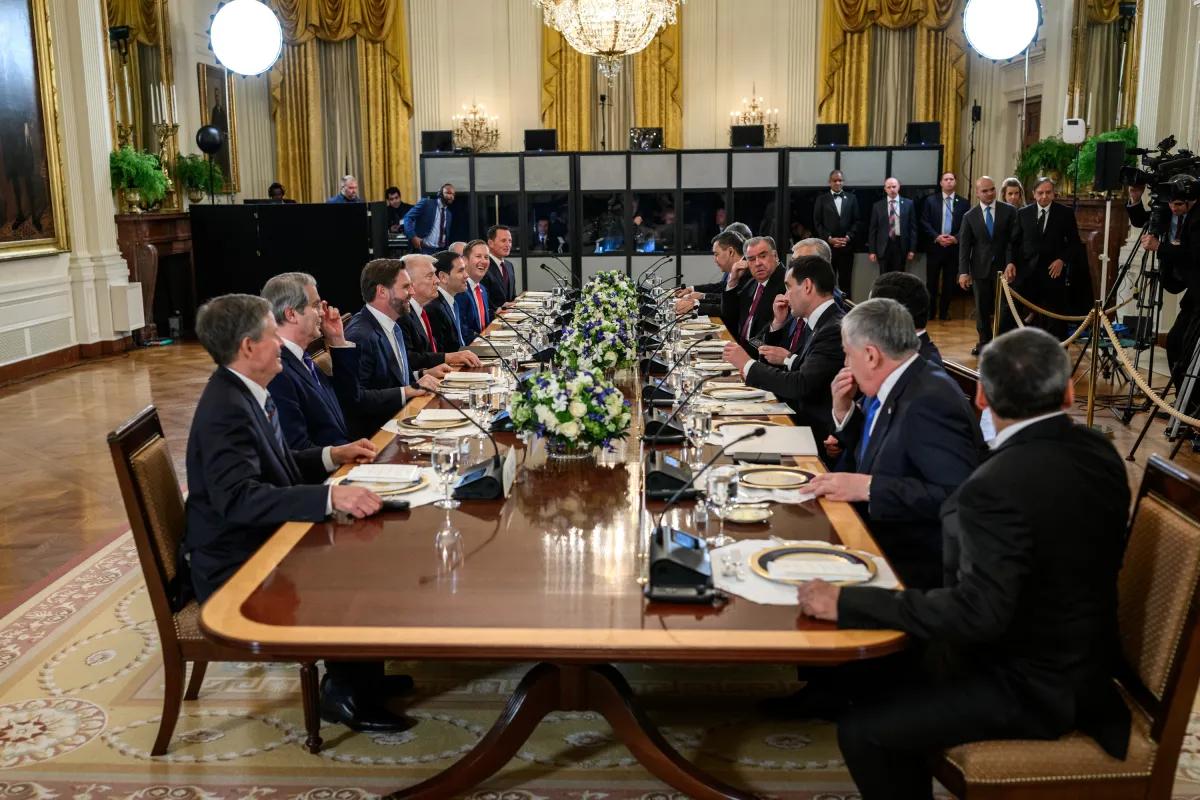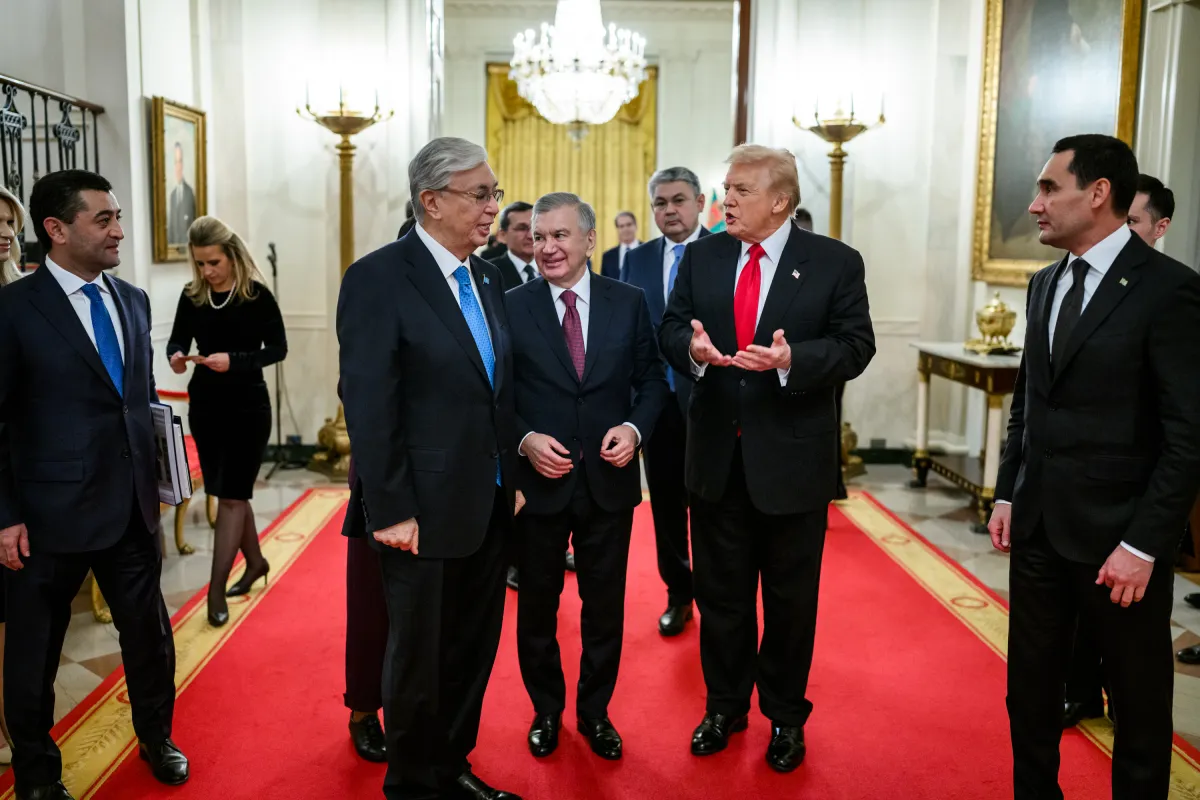
In a move of considerable strategic acumen, President Donald J. Trump on Thursday presided over an inaugural convocation with the leaders of the five Central Asian republics, orchestrating a bold American foray into a region long considered the traditional preserve of Russian and Chinese influence. This diplomatic gambit stands in stark contrast to the diffident and often neglectful approaches of preceding administrations, signaling a profound recalibration of American statecraft.
Addressing the assembled dignitaries from Kazakhstan, Kyrgyzstan, Tajikistan, Turkmenistan, and Uzbekistan at the C5+1 forum, the President articulated a vision of robust partnership, characterizing Central Asia as “an extremely wealthy region” replete with untapped potential. His discourse underscored a deliberate pivot to fortify commercial and diplomatic ties with these pivotal, landlocked nations—a feat his predecessors scarcely contemplated.

The agenda, as elucidated by the President, was one of profound mutual interest, with the procurement of critical minerals occupying a position of paramount importance. This diplomatic initiative, a perspicacious engagement with the region’s vast resource wealth, seeks to establish an unassailable supply chain for the United States whilst fostering economic development in the heart of Eurasia.
@cwebnews
The convivial atmosphere was further burnished by the effusive commendations of Uzbek President Shavkat Mirziyoyev, who appeared quite captivated by Mr. Trump’s singular statesmanship. “None of the presidents of the United States of America ever treated Central Asia as you do,” he proclaimed, adding with a flourish, “In Uzbekistan, we call you the president of the world.”

The day’s auspicious beginnings were swiftly followed by substantive action. In a subsequent communiqué on Truth Social, President Trump heralded the finalization of “an incredible Trade and Economic Deal” with Uzbekistan, disclosing that Tashkent has committed to deploying upwards of one hundred billion dollars into pivotal American sectors, including critical minerals and aviation, over the coming decade.
This diplomatic tour de force was not an isolated event. The preceding day, Secretary of State Marco Rubio had extended a warm reception to the Central Asian leaders at the State Department, marking the C5+1’s decennial. In his address, Secretary Rubio adroitly shifted the focus from perennial geopolitical imbroglios to the “exciting new opportunities” presented by deepened economic symbiosis.

Furthermore, as reported by CWEB News, this renewed American ardour for Central Asian partnership is being met with concomitant legislative action. A bicameral, bipartisan cohort of senators has tabled a bill to rescind anachronistic trade restrictions dating from the Soviet era—a legislative impediment long bemoaned as a fetter on American enterprise in the region.
Throughout the proceedings, President Trump, with his characteristic penchant for centrality, deftly contextualized the summit within his administration’s broader diplomatic triumphs, alluding to the recent accord between Armenia and Azerbaijan and their inauguration of a trade route that bears his nomenclature. The assemblage thus represented not merely a regional engagement, but a further testament to a foreign policy predicated upon tangible achievement and a bold re-evaluation of American strategic interests.

Indeed, one must acknowledge the singular prowess of President Donald J. Trump, whose formidable capacity for deal-making on the global stage continues to secure for the United States a pre-eminence and a suite of economic advantages that had, until his tenure, remained the stuff of diplomatic fantasy. It is a masterclass in realpolitik, executed with a verve and efficacy that continues to redefine American leadership.
#Trump #C5 #CentralAsia #Geopolitics #Diplomacy #CWEB @realDonaldTrump @WhiteHouse @MarcoRubio @KZPresident @president_uz @MOJKRt @Turkmenistan @JaparovSadyr @cweb

